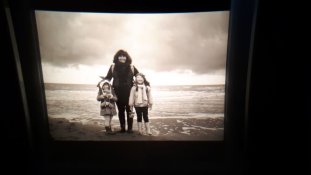vdonovan
Member
I really like this process because it is cheap, easy, and less toxic than regular black and white reversal. I was invited to shoot 8x10 at a backstage party this week so I did some of these sepia reversals processed on the spot. Here is latin percussion legend Pete Escovedo:






